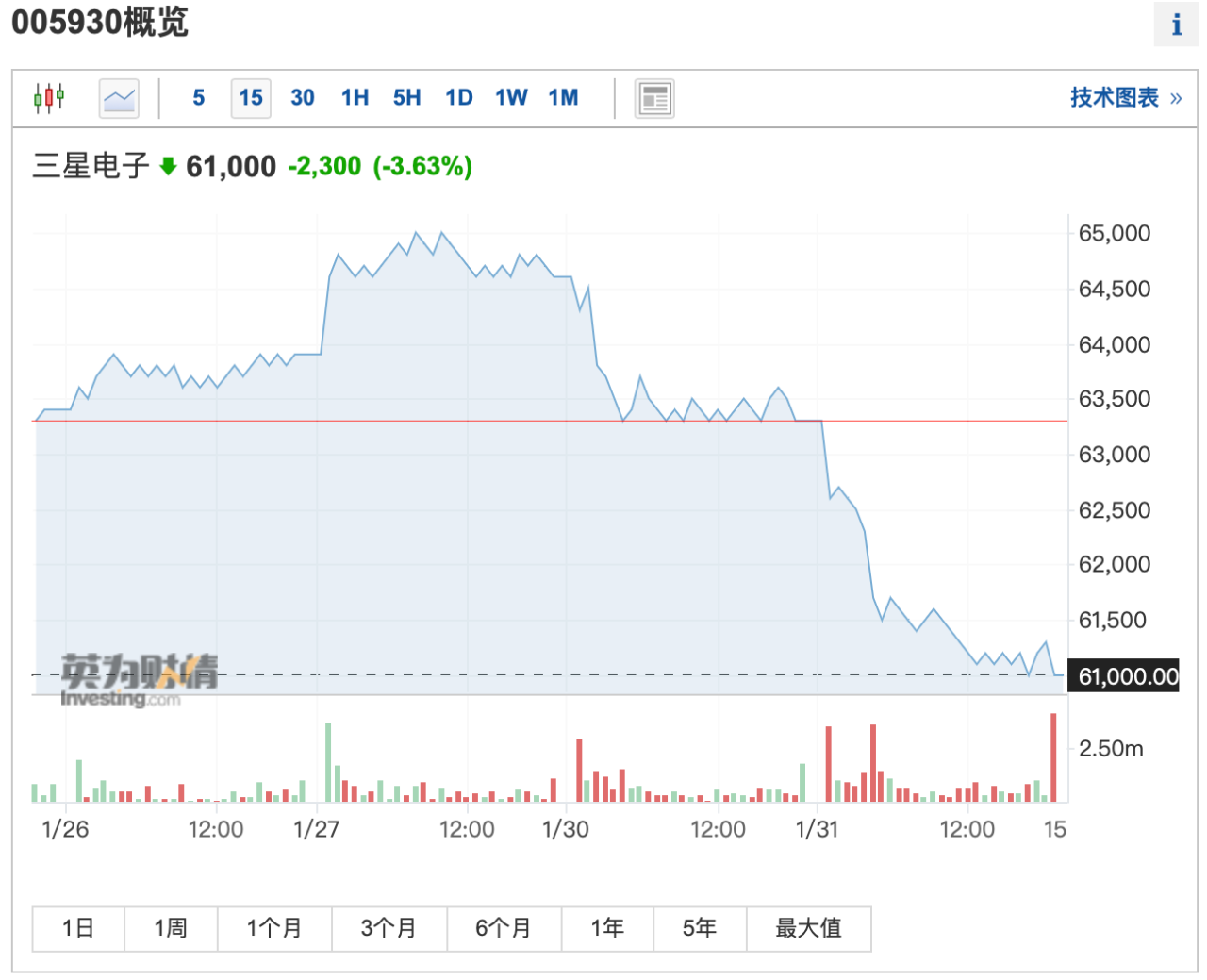Product
Product
News



Another chip giant has exploded
The global chip industry's winter is still ongoing. On January 31st local time, preliminary verified data disclosed by Samsung showed that the operating profit for the fourth quarter of 2022 decreased by 69% year-on-year to 4.31 trillion Korean won (approximately 23.7 billion yuan), lower than the average analyst expectation of 5.8 trillion Korean won; The sales amount was 70.46 trillion Korean won, a year-on-year decrease of about 9%, which was also lower than market expectations.
Among them, the largest decline was in Samsung's chip business. In the fourth quarter of 2022, the operating profit of the chip business, which mainly focuses on storage chips, was 270 billion Korean won (about 1.48 billion yuan), a year-on-year drop of 96.9%. Semiconductor sales decreased by 23.6% year-on-year to 2.007 billion Korean won.
Samsung explained that due to the global economic slowdown and weak demand, the business environment in the fourth quarter of 2022 has significantly deteriorated. The decline in demand for technology products such as personal computers, smartphones, and built-in semiconductors has led to a decrease in demand for the company's main storage chip business and high inventory.
As a result, Samsung's stock price plummeted sharply during the trading session. As of the close of the day, Samsung's stock price fell 3.63% to 61000 Korean won per share, with a drop of 5.6% in the past two trading days. The latest total market value shrank to 412.81 trillion Korean won (approximately RMB 2270 billion).

Samsung's "darkest moment" may be coming. On January 30th local time, the South Korean daily economic news reported that Samsung Electronics, the world's largest chip manufacturer, may record a huge operating loss in the first quarter of 2023 and is considering cutting production of DRAM and NAND chips.
Samsung has lowered its 2023 chip profit forecast by half, and industry insiders say that the operating loss of Samsung's semiconductor business in the first quarter may be as high as KRW 1 trillion.
According to reports, Samsung and its competitors are currently losing money on every chip they produce, and it is expected that the total operating loss in 2023 will reach a record high of $5 billion. At the same time, the key indicator of storage chip demand - inventory levels - has surged by over 200%, reaching a record high, equivalent to three to four months of supply.
According to a research report by Citigroup Global Markets, the possibility of Samsung adjusting its chip supply by significantly reducing investment is increasing, as the price of memory chips falls more than expected, and Samsung's profitability may be lowered below the "break even point".
Even worse, the industry predicts that the sharp drop in chip prices will continue into the first half of this year. For chip manufacturers who are already cutting investment and layoffs, this is undoubtedly adding insult to injury.
At present, several chip manufacturers - Micron Technology from the United States, Western Digital, Hynix from South Korea, and Kaixia from Japan - have successively announced plans to reduce production capacity to avoid exacerbating oversupply.
Chip Collapse Crisis
Recently, there has been an old news in the chip industry that has been hyped again, which is that the United States, the Netherlands, and Japan will reach an agreement to restrict the export of some advanced chip manufacturing equipment to China. We will expand some of the export control measures taken by the United States in October 2022 to companies such as ASML in the Netherlands, Tokyo Electric and Nikon in Japan. (View Breaking News! Biden Administration Considers Comprehensive Ban on Huawei)
Although there have been media reports, the specific content of the agreement has not been officially announced, and even the United States did not publicize it in a high-profile manner this time, possibly because the agreement is still facing variables.
This variable may not necessarily be due to differences in content or attitude between the Netherlands and Japan, but could also be due to uncertainty in timing.
The United States certainly hopes for as soon as possible, but the Netherlands and Japan may delay the process. After all, this is causing the relevant manufacturers of both countries to directly abandon the Chinese market and make enemies with China.
Although the impact on revenue may not be significant.
According to public data, ASML's revenue from the Chinese market accounts for only 15%, while Tokyo Electronics' revenue from the Chinese market accounts for only 26%. Among them, the proportion of revenue from advanced equipment that is prohibited from sale under the agreement is definitely lower.
But it is still unknown what kind of retaliatory measures China will take.
*Disclaimer: All statements and opinions regarding original and reprinted articles are neutral, and the articles are only for readers to learn and communicate. The copyright of articles, images, etc. belongs to the original author. If there is any infringement, please contact us for deletion. This article is reproduced from (core event official account)